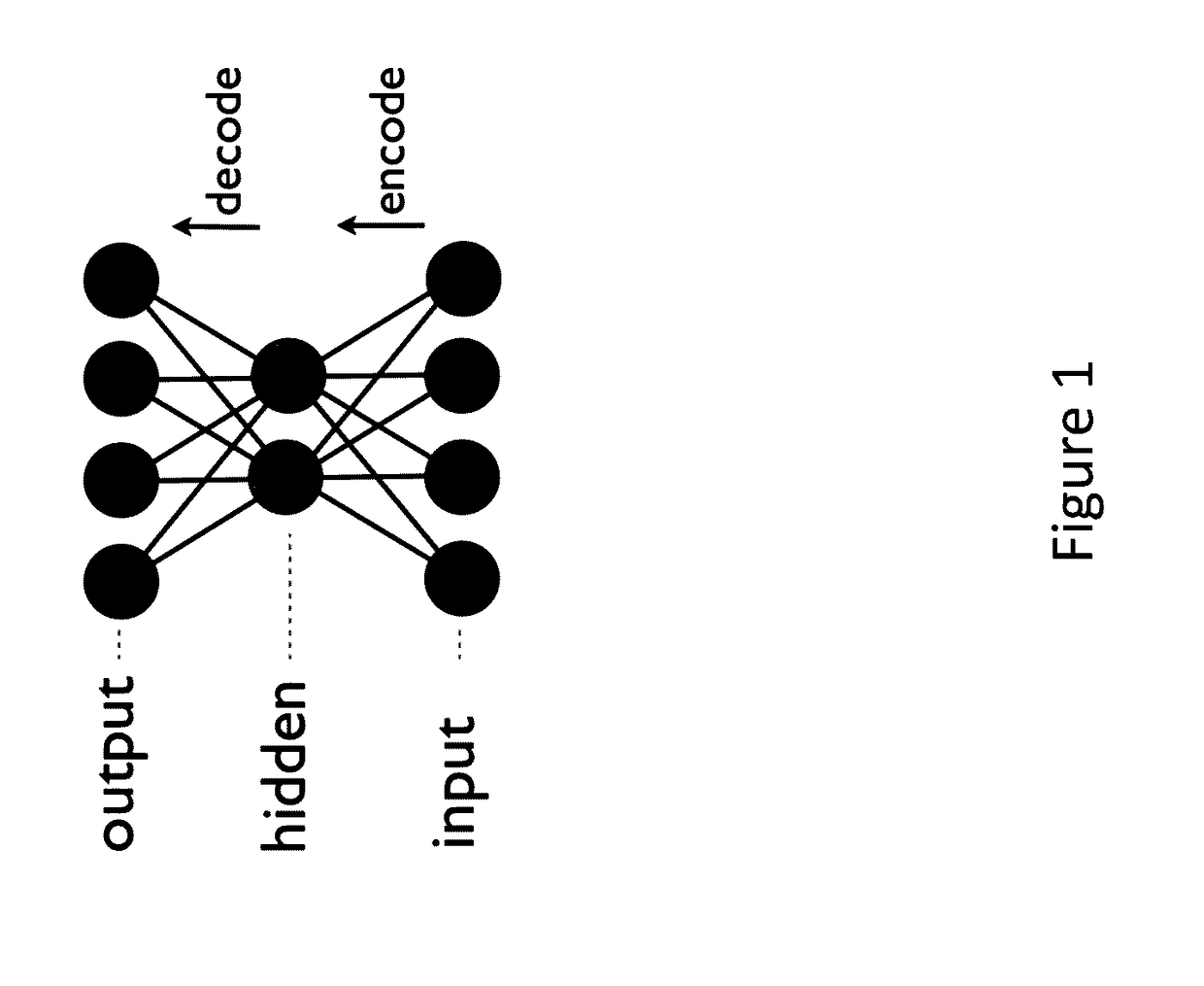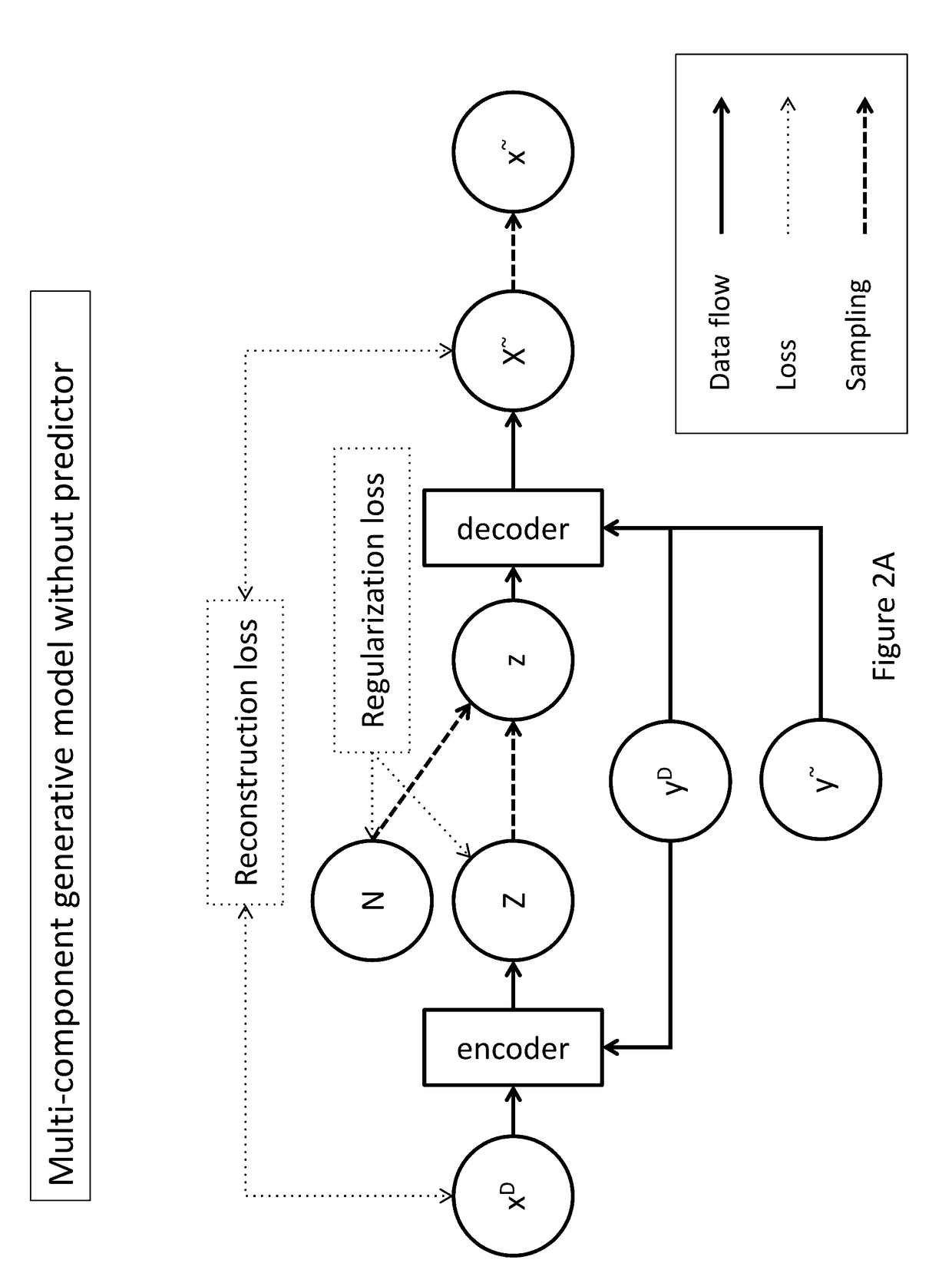Generative machine learning systems for drug design
a machine learning and drug technology, applied in chemical machine learning, probabilistic networks, instruments, etc., can solve the problems of system training constraints, irregularization errors may comprise penalties associated with the complexity of encoding distribution, etc., to minimize the reconstruction error and minimize the loss function
- Summary
- Abstract
- Description
- Claims
- Application Information
AI Technical Summary
Benefits of technology
Problems solved by technology
Method used
Image
Examples
example 1
a for the Encoder During Training
[0148]In one example, data is provided to the encoder as pairs comprising a chemical compound representation (xD), such as a fingerprint comprising a feature vector of molecular descriptors, and the label (yD) associated with the represented compound. A pair input to the encoder may be described as IE=(xiD, yiD), wherein xiD is a real-valued vector with dimensionality dimxiD and wherein yiD denotes label data for the corresponding xiD. The dimensionality of xiD, dimxiD, may be fixed throughout a training data set. Elements of yD may be scalars or vectors optionally having arbitrary dimensions. Label element values in yD may be continuous or binary.
[0149]According to the descriptions in this example, for xD with dimension 10, and yD comprising a single label element value, an input data example may be as follows:
xD=(1.2, −0.3, 1.5, 4.3, −2.9, 1.3, −1.5, 2.3, 10.2, 1.1),
yD=3, and
the input to the encoder is[0150]IE=((1.2, −0.3, 1.5, 4.3, −2.9, 1.3, −1.5...
example 2
Encoder During Training
[0151]An exemplary output structure for the encoder is described. For a given IE=(xiD, yiD) input to the encoder, the encoder outputs a pair of a real-valued vector of means μE,i and a real-valued vector of standard deviations σE,i, represented as OE=(μE,i, σE,i)=((μE,i,1, . . . , μE,i,d), (σE,i,1, . . . , σE,i,d)). Dimensions of vectors μE and σE are the same in this example. However, the dimensions of vectors μE and σE may be different than dimxiD or dimxiD+dimyiD. OE is provided by the encoder in a deterministic fashion. For a given IE and set of parameters of the encoder, a single OE pair is provided. For a dimensionality of 4, an exemplary output of encoder is illustrated by μE=(1.2, −0.02, 10.5, 0.2) and σE=(0.4, 1.0, 0.3, 0.3).
example 3
of Latent Variable Z During Training Process
[0152]In this example, the means and standard deviations output by the encoder define a latent variable Z=(N(μE,i,1, σE,i,1), . . . , N(μE,i,d, σE,i,d)) wherein μE,i and σE,i are vectors output by the encoder and wherein N denotes a normal distribution. For example, if the output of the encoder comprises μE=(1.2, −0.02, 10.5, 0.2) and σE=(0.4, 1.0, 0.3, 0.3), the sampling module may define a latent random variable as Z=(N(1.2, 0.4), N(−0.02, 1.0), N(10.5, 0.3), N(0.2, 0.3)).
PUM
 Login to View More
Login to View More Abstract
Description
Claims
Application Information
 Login to View More
Login to View More - R&D
- Intellectual Property
- Life Sciences
- Materials
- Tech Scout
- Unparalleled Data Quality
- Higher Quality Content
- 60% Fewer Hallucinations
Browse by: Latest US Patents, China's latest patents, Technical Efficacy Thesaurus, Application Domain, Technology Topic, Popular Technical Reports.
© 2025 PatSnap. All rights reserved.Legal|Privacy policy|Modern Slavery Act Transparency Statement|Sitemap|About US| Contact US: help@patsnap.com



